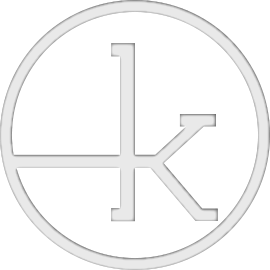The Lens Intention Diagram
A shitton of lenses...
Since both micro-contrast and element count article have been well received, I propose a follow-up synthesis article to help apply such theory as I have done in my practice. Before diving into this, lets remind ourselves of what we have learned so far.
Recap
- A glass element corrects the incoming light for either field curvature, distortion, chromatic aberrations, etc.. The more light is corrected, the more resolution is achieved at the sacrifice of depth rendition.
- Complimentary from element count, micro-contrast is highly dependent on the quality/type of materials used to make glass and coating. Micro-contrast increases tonality. However, micro-contrast efficiency is dependant on element count: the more elements there are, the less efficient will be.
- The theory applies to lenses most of the time, though there are rare exceptions.
BEHOLD! The lens intention diagram
The diagram attempts to synthesize the rendition and design compromises of a lens based on what it’s trying to achieve. As such it is easier to situate lenses adapted for expected shooting style.
Explained
Just being smooth to the ladies here.
The bare triangle explains the compromises made in glass element count relative to high aperture values and optical correction based on lens behaviour:
- Lower element count means more depth rendition, but less optical correction.
- Higher element count means less depth rendition, but more optical correction.
- Lenses with high aperture and high correction can’t produce 3D pop.
- Lenses with high aperture and high 3d have less corner resolution.
The micro-contrast gradient explains two things:
- The efficiency of the glass. Each manufacturer has a way to make glass. Each recipe is comprised of a varieties of components which quantity is unknown to public. It's known that LEAD in glass (therefore crystal) gives a rendering advantage over unleaded.
- The efficiency of micro-contrast on glass element count. Low element count, higher efficiency. (ex: a 6 elements Carl Zeiss ZF Planar 85mm 1.4 lens would have superior tonality to a 11 elements Carl Zeiss ZF Milvus 85 1.4 lens since both have amazing T* coating)
- The efficiency of coating on tonality. It's less important but it generates less inner reflections between the lens elements (ex: a 6 elements Canon EF 50mm 1.8 lens wouldn't have as good tonality as an 8 elements Canon EF 50mm 1.2L lens, since the L coating is superior to the typical "super spectra")
- The higher the quality of glass and coating, the higher the price... usually. It is the biggest optical luxury of the world.
Using the diagram on shooting genre
Here’s an example of how I would spread the shooting genre in the depth rendition triangle. The farther the genre is from the centre of the triangle, the more specialty lens the genre needs (in absolute). The closer the genre is to the centre, the more versatile the lens needs to become. A portrait rarely requires high optical correction for corner sharpness. I encourage you to define your own triangle.
Using the diagram on existing lenses
When I was shopping for a super wide angle lens for my D750, my unconscious thought process was to situate every lens I was shopping for in the intention diagram. I wanted to prioritize versatility: Not only that wide-angle would shoot landscapes but it will also shoot events. By comparing element count, micro-contrast and the images shot by each lenses, I could subjectively put them on the triangle assuming their micro-contrast is ideal.
Compared lenses here are
- Voigtlander 20mm f3.5 (9 elements)
- Nikkor AF-S 18-35mm f3.5-4.5G (12 elements) <- I eventually went with this one.
- Nikkor AF-S 20mm f1.8G (13 elements)
- Nikkor AF 20mm f2.8D (12 elements)
- Sigma ART 20mm f1.4 (15 elements)
- Tamron 15-30mm f2.8VC (18 elements)
Image taken with the 18-35G
EXTRA: Optical Correction by Aperture vs Glass Element
6, 8, 7, 8, 6, 11 elements...
It is common belief that resolution is achieved when all the chromatic aberrations and field curvature (mostly found in the corners of the images) are corrected. In order to achieve better corner resolution on a focal length, there are two ways to go about.
- Correction by aperture: You close the aperture down but widen the depth of field and doesn’t completely achieve extreme corner resolution due to field curvature. Aperture is variable, it demands more intervention from the user.
- Correction by glass element: You add a lens element but diminish the lens’ depth rendition and micro-contrast abilities. Glass element count is invariable, it demands less intervention from the user.
- You can always close or open the aperture to achieve various results on a low element count lens at the cost of corner resolution. The lens becomes more versatile
- If you add a glass element, you cannot remove it unless you buy another lens less glass. The lens becomes more of a specialty.
Understanding the compromises
A bunch of fifties
Using a lens is accepting its position in the diagram based on the photography genre you are trying to practice. Some genre and lenses have a wider purpose than others. It is up to you to decide. For future lens reviews, I shall be referring to this diagram.




